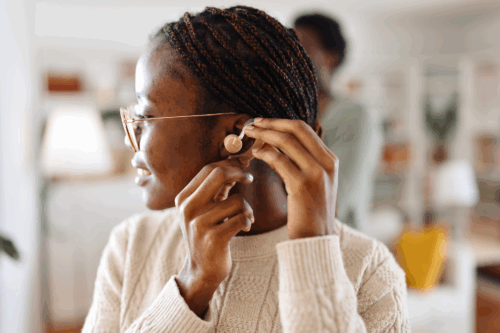Sound often connects people to one another and to the world; for an estimated 1.57 billion people with hearing loss, that connection is thrown into jeopardy. Often rooted in genetic causes, non-syndromic hearing loss (NSHL) is a category of auditory impairment unaccompanied by other medical conditions. Although it makes up seventy percent of hearing loss cases, many forms of NSHL remain obscure.
A new study by first author Muhammad Muaaz Aslam, a postdoctoral research associate at the University of Pittsburgh, and key contributor Khadim Shah, an associate staff scientist at Cincinnati Children’s Hospital Medical Center, aimed to uncover these obscurities. The two worked with an international team of researchers to elucidate the molecular causes of a rare form of NSHL: sensorineural hearing loss (SNHL). Previous studies display that this genetic disease is associated with mutations in the GPR156 gene. Functioning GPR156 genes code for a G-protein-coupled receptor (GPCR) found in all hair cells in the cochlea, a spiral cavity in the inner ear. When knocking out or removing GPR156, hearing loss is observed.
Two different forms of genetic sequencing were used to investigate GPR156 in two brothers with SNHL. Exome sequencing analyzed the protein-coding regions of the mutated GPR156 to identify the location of any mutations. Based on the data from the exome sequencing, primers were designed to detect the variation of interest in the code, and Sanger sequencing was used to identify every nucleotide of the mutated DNA fragment. Further analysis via 3D modeling was done on the mutated protein as a result of the variant and confirmed the phenotypic consequences of the mutation.
Their analysis found a mutation leading to truncated versions of the original protein in both copies of each sibling’s GPR156 genes—one inherited from each parent. This homozygous nonsense variant was not previously recognized in databases documenting genetic mutations or in the normal human genome.
The new variant was searched for in the rest of the family, and it was found that the siblings’ healthy parents both carried one mutated variant. Although the inheritance pattern was suspected from the family pedigree, the sequencing results genetically confirmed the autosomal recessive nature of SNHL.
The study demonstrated the importance of GPCRs to the internal structures, highlighting the necessity for further genomic research on the role of different GPCRs in hearing impairment. Past research points to the expression of over thirty GPCRs in cochleas of different animal models. Despite the many millions that may be affected, the roles of these GPCRs remain understudied.
From their research, the team hopes to develop genetic therapies for patients with rare NHSL by delivering normal GPR156 genes to patients’ cochleae using virus vectors. “While the study identified the mutation, the next step is to develop gene therapy,” Shah said. “The team aims to advance prenatal testing and personalized medication for GPR156 mutation carriers, enabling early diagnosis and tailored treatments.” They will continue investigating the role of GPR156, other GPCRs, and new therapies to help patients regain their auditory connection to the world.

